
确诊降82%,加强针不打了?莫德纳CEO首次承认:疫情要结束了!
华人生活网
02/17/2022
本周全美确诊数字又比上周下降了近一半,住院人数也在继续降低。
同一时刻,由于美国人对病毒的恐惧感下降,美国Covid加强针的推广宣传已经戛然而止,接种率达到了历史最低点。


最新CDC报告,每天接受COVID-19疫苗加强针的美国人不到20万。这是自9月下旬开始接种以来,与此同时人们注意到第三针的宣传不再像12月和1月那样多。
全美目前病例缩减到136,241例,在过去的一周里下降了43%,比冬季的高峰期下降了83%。确诊者多数为轻微症状,这点从各州的住院率上已经体现出来,但死亡及相关死亡依旧达到平均每天2264人。
不管是疫苗免疫还是自然免疫,美国的群体免疫显然应该已经到达了一定的数量值,各州医疗体系在高峰时也未被挤兑,似乎一场疫情危急如今走入了尾声。


今天,Moderna首席执行官Stephane Bancel也加入到了疫情即将结束的科学家”阵营“中。
长期以来,在Omicron会不会将Covid-19大流行变为地方流行这一问题上,专家分为两派,一波认为Omicron是该大流行病的最后一站;还有一波坚持认为未来还有更恐怖的变异毒株。
而作为疫苗厂商的Moderna一直以来,都保持谨慎的预测。

Bancel告诉CNBC,他相信Omicron之后的下一个病毒株将不会像高度感染性、抗疫苗的病毒株那样剧烈,该变种目前正在耗尽的方式也是一个向前发展的积极信号。
他说:”有80%的机会,随着Omicron的进化或[Covid]病毒的进化,我们将看到病毒的毒性越来越小。”
现在回头想来,2021年疫苗接种陷入僵局,大家对于全体免疫感到遥遥无期时,是否会想到Omicron的出现?它加快了人们的免疫系统的同时,也给我们带来了黑暗的两个月,但是最终人类因为这个变异是幸运还是不幸呢?
Bancel说:我认为我们这个世界很幸运,Omicron的毒性不是很强,如果它是一个猛烈的病毒,那我们可能无法再乐观预估未来。但即便如此,我们仍然看到全世界每天都有成千上万的人因为Omicron而死亡。

这种新菌株在11月下旬首次被南非官员发现,并迅速风靡全球。它导致西方世界大部分地区的Covid病例激增,美国的感染率在1月中旬飙升至每天80万的记录。
不过,Omicron很快就烧毁了,并正在耗尽。目前,Omicron的死亡数字并未达到与夏季的Delta变体或2021年冬季的Covid激增一样的数字,也再次证实该病毒株比以前的病毒版本更温和,而且美国人口现在基本上已经对其免疫。
专家们希望,它的高感染率加上该变体相对温和的性质,能够让大流行的结束即将到来。
该变种感染了如此多的人,以至于全球人口的很大一部分现在对它都已经有自然免疫力,再加上越来越多的接种疫苗的人,两部分加在一起,病毒已经无路可走。
一些专家认为,Covid的 “大流行 “阶段将在今年年底前结束,人类将能够像对待流感一样与该病毒共存。
辉瑞公司首席执行官Albert Bourla(其疫苗是Moderna在西方市场的最大竞争对手)也认为,这一阶段就能在不久的将来达到,当然前提是没有抗体的人要尽快接种疫苗。
从去年年底至今,整个美国、英国和许多其他欧洲国家都在被Omicron打击后,病例迅速下降。
病例的下降使许多人希望美国联邦卫生官员能够效仿欧洲,就像英国、瑞典、挪威和其他有类似趋势的欧洲国家一样,放开covid大流行的限制。

随着加州今天加入了取消室内口罩令后,全美几乎各州级别的口罩令几乎全部松绑。(湾区除了圣他克拉拉县之外,其他八县同步解除已接种新冠疫苗者的室内口罩令,代表已接种疫苗者今后在阿拉米达县、康曲柯士达县、马连县、纳巴县、旧金山、圣马刁县、苏拉诺县和苏诺玛县前往电影院看电影,或是在餐厅内用餐,都无需再戴口罩。)
上周,康涅狄格州、马萨诸塞州和特拉华州等东北部各州都确定了在未来几周内取消学校口罩规定的日期。
伊利诺伊州、新泽西州和纽约州等州决定取消室内公共场所的强制规定,但仍要求在学校戴上面罩。
食品和药物管理局前局长、辉瑞公司现任董事会成员斯科特-戈特利布博士上周告诉CNBC,在经历了近两年的Covid之后,取消这些规定对美国人来说是一种解脱,并允许学校再次达到 “正常状态”。
不过,联邦领导人对改变指导方针一直犹豫不决。上周,CDC主任罗谢尔-瓦伦斯基(Rochelle Walensky)确认,她的机构仍然支持在学校普及口罩,并支持人们在室内公共场合佩戴面罩。
乔-拜登总统上周也表示,将支持CDC关于保留口罩指导的决定。

(加州今天举行的超级碗冠军大游行)
口罩对于华人来说一直不是”负担“,戴也不戴只是一个动作上的问题;但是对于多数美国人来说,文化上的不认同,以及政府强制性的决定,都成为了人们反对戴口罩的原因。
最后从欧洲情况来看,在解除口罩令后,可能会有小范围反弹,但最终趋势会继续下降。不过美国的情况比较特殊,毕竟美国蓝州解禁的同时,红州一直没实施强制口罩令,而各州又不封闭式独立,所以“口罩令”或许在美早已算名存实亡。

Former UW-Milwaukee professor agrees to plead guilty to defrauding Chinese graduate students
By Bruce Vielmetti | Milwaukee Journal Sentinel
02/15/2022
A former University of Wisconsin-Milwaukee professor has agreed to plead guilty to federal crimes related to a years-long scheme to defraud Chinese graduate students and visiting scholars.
Yue Liu, 41, of Mequon, also known as Troy Liu, joined the UWM faculty in 2009 as an assistant professor and became a full professor of civil and environmental engineering who was active as of 2021. He is no longer employed at UWM, said Michelle Johnson, a university spokeswoman.
Johnson declined any other comment about the matter other than to say, “We also want to express our gratitude to the U.S. Attorney’s Office, which is working to obtain restitution for our students.”
According to a plea agreement filed Friday in federal court, in 2016 Liu created UW International Education Foundation LLC, and in 2017 changed its name to Wisconsin International Education LLC. He made promises to foreign students accepted into graduate programs at UWM that his organizations could help them meet various expenses.
Some key expenses, such as tuition, were already waived for graduate students who worked as research assistants.
Liu used a fake name, Ian Wyatt, and letterhead that incorporated the UWM logo. He later told agents students would not have trusted someone with a Chinese name. Liu, a Chinese citizen with permanent legal resident status in the U.S., targeted more than 20 Chinese graduate students during the scheme, according to records.
In response to Liu’s false representations, students would wire money to Wisconsin International Education. Between 2016 and 2020, Liu obtained $1.1 million through the scheme, according to the plea agreement.
“As further part of the scheme, Liu attempted to conceal his fraudulent activity by creating a fraudulent Sponsored Research Agreement with UWM using a fictitious entity purportedly based in China,” the court records indicate.
Some of the money students sent to Liu’s WIE group paid his personal expenses and some was channeled through the fictitious Chinese entity to repay UWM for certain research expenses.
A relative paid Liu to become a research assistant at UWM, according to the plea agreement. Several visiting scholars from China also paid money through Liu to spend time at the Milwaukee campus.
Some students told agents they had met Liu in Shanghai, where he gave presentations about studying at UWM. Some later learned from fellow graduate students it was unusual to pay around $30,000 a year to be part of the program Liu advertised, and it was not actually part of UWM.
In interviews with agents, “Liu admitted that UWM did not know he was profiting off the students, but said ‘that’s the difference between China and the U.S.. . . You don’t know the culture of China. That’s the reason why this business exists.’ “
Wire fraud is punishable by up to 20 years in prison and a $250,000 fine, and the unlawful monetary transaction offense carries a maximum 10 year prison term and fine of up to $250,000. Prosecutors have agreed to recommend a sentence with the sentencing guidelines range.
No date for Liu’s sentencing has been set.
纽约夫妻涉窃比特币 司法部追回36亿美元创纪录
中央社 | 华盛顿
02/08/2022

美国司法部今天宣布,他们已追回2016年失窃的9万4000多枚比特币,这些比特币目前价值36亿美元,查获金额创纪录。
司法部表示,一对遭控寻求为这些比特币洗钱的夫妇在纽约被捕。34岁的李赫登斯泰(Ilya Lichtenstein)和他31岁的妻子摩根(Heather Morgan)预定因所控罪名在联邦法院出庭。
李赫登斯泰和摩根据称寻求为2016年从数字货币交易中心Bitfinex骇得的11万9754枚比特币收益洗钱,这些比特币当时价值6500万美元。Bitfinex的总部位于香港。
司法部副部长摩纳可(Lisa Monaco)在声明中说:「今天的逮捕,以及司法部历来最高的金融查获,显示加密货币对犯罪份子来说不是安全的避风港。」

Instagram/heatherreyhan
根据法庭文档,部分失窃的比特币被送往一个李赫登斯泰控制的电子钱包,约2万5000枚比特币接下来5年通过「错综复杂的加密货币交易从电子钱包移出」,所得款项被用来购买黄金及NFT(非同质化代币)等物品。
剩余的比特币上周被美国调查人员追回,并吁请最初失窃的受害者前来认领。

南加油价再创新高 华人社区传出汽油被偷频繁
世界新闻网
02/08/2022

美国汽车俱乐部(AAA)7日公布数字显示,加州部分地区汽油价格再达破记录高位,包括洛杉矶县、橙县、圣伯纳汀诺县和范杜拉县再创纪录,加州继续稳坐全国汽油价格冠军;与此同时,华人社区近期频传汽油被偷被吸事件,令问题雪上加霜。
L.A., O.C. gas prices reach record-breaking levels — and may climb even higher
AAA 7日数据显示,洛杉矶、圣伯纳汀诺、橙县和范杜拉普通汽油价格创下历史新高。洛杉矶县周日创下每加仑4.74元新纪录,圣伯纳汀诺县每加仑4.69元,橙县每加仑4.72元,范杜拉县4.73元。
在湾区,旧金山的汽油价格接近创纪录的每加仑 4.82元,离历史最高纪录只有七分之差。圣荷西稍微好一点,每加仑4.74元,沙加缅度每加仑4.62元。
7日,加州的平均汽油价格接近历史最高纪录,普通汽油价格为每加仑4.68元,这一价位比全国平均每加仑3.44元高出1.24元即36%,仅比2021年11月27日创下的全州最高记录平均价格4.71元低三分。
AAA表示,一年来汽油价格上涨,近期由于世界紧张局势,过去一个月每桶汽油价格更是上涨十元以上,本周高达每桶94元,比去年8月再高出每桶将近35元,炼油厂周一开始向南加州运送更昂贵的「夏季混合(summer blend)」汽油,如果天然气价格上涨压力继续,南加地区接下来的几周内,可能会出现所有地区的汽油价格创历史新高。

居高不下的油价已让不少民众感到切肤之痛,而近期华洋社区频传偷油和吸油事件,更让民众感到口袋失血与安全隐患双重压力。
「我家的特斯拉SUV上周加满了油,整整25加仑」,家住Victorville的媒体工作者周先生说,中国新年过年期间全家几乎都没有出门,只是太太开车出了趟短门采购,但他周末他和女儿准备出门时,却发现油箱很快亮起红灯,家人都奇怪这周的油为何下去这么快,只能再去加油,到油站才注意到汽车油箱入口处有明显的流油痕迹。
周先生表示他家的汽车平常都停在车库,不可能有人可以偷油吸油。细细回想才想起日前他曾开车到离家三分钟路程的公园遛狗,当时停车场并没有其他车辆,但等他遛完狗回到停车场时,看到一男一女两名其他族裔的汽车正好停靠在他的汽车旁边,两人的汽车上装满了各种园丁工具,看到他回来,两人匆匆离开。
周先生表示,他平常都是加91号油,好市多(Costco)每加仑也要4.60元左右,一下子被人偷吸20加仑左右,近百元没了,好心痛。
家住格兰杜拉的林先生表示,他的BMW和Acura平常都停靠在自家前院,非常安全,但最近一个月BMW已两度被人偷吸汽油,30多加仑汽油一夜之间蒸发掉,气得想骂人。
林先生表示,同样停在前院,同样加满油,他的Acura就没有被偷油,应该是小偷无法打开油箱盖有关,而BMW一拧就开。他说,世风日下,将来买车防偷油都要考虑到,他的车现在每次都只加半箱油,减少可能的损失。
通膨伤「薪」 劳工去年收入减2.4% 学者:今年工资缓增
世界新闻网
01/31/2022

新闻周刊报导,服务于私人产业的美国劳工在2021年里,虽获得4.7%的史上最高平均加薪幅度,却因为通货膨胀严重,食物、汽油等价格飙至近40年新高,导致实质收入其实缩水2.4%。展望2022年趋势,经济学者指出,工资仍将继续调高,但速度将较去年缓慢。
报导指出,劳工统计局数据显示,2021年里只有休闲娱乐及餐旅业领域的劳工获得加薪幅度足以抵抗物价飞涨。
休闲娱乐及餐旅业时薪员工在2021年平均加薪14%,薪资价码来到19.57元。而在2021年里,做为通货膨胀指针的消费者物价指数(CPI)则增加了7%。
其他私人产业劳工的加薪幅度,则都赶不上通膨。报导指出,专业人士及商业服务业,6.2%调薪幅度仅次于休闲娱乐及餐旅业。专业人士及商业服务业包括会计师、律师、建筑师、图像设计师、管理顾问、清洁工、广告公司员工、办公室行政人员及电话客服中心员工,2021年整体平均时薪来到37.81元。
运输及仓储业、零售贸易业员工2021年则都有大约5%加薪。
受到疫情,大批劳工提前退休,某些职业妇女被迫离开职场在家照顾小孩。雇主面临人力短缺,则想尽办法招致员工。
ZipRecruiter网站首席经济学者茱莉亚‧波拉克(Julia Pollak)分析,如今雇主为了吸引劳工,推出各式各样的诱因。她说,长年以来统计数字显示,平均每个职缺有2.4名失业者争取,「现在则是平均每个职缺有0.6名失业者争取,各行各业都展开抢人大作战」。
报导指出,2021年加薪幅度最大的职缺是低薪劳动工作,休闲娱乐及餐旅业里的某些非管理阶层员工,加薪幅度甚至将近16%,包括餐厅、酒吧、饭店、博物馆、游乐园、运动场、赌场的时薪制劳工。
经济专家分析,美国劳工在2022年仍可望继续获得加薪,只不过速度将比去年较为缓慢,至于加薪幅度能否超过通膨则有待观察。
Hotter inflation could mean higher tax bills for Americans in these states
Some Americans could see higher state tax bills as inflation spirals higher
By Megan Henney | FOXBusiness
11/12/2021
Millions of Americans could be in store for higher taxes as spiraling inflation pushes consumer prices higher.
The phenomenon, known as “bracket creep,” results when taxpayers are pushed into higher-income brackets even though their purchasing power is essentially unchanged due to steeper prices for everyday goods.
Although the IRS adjusts federal income taxes for inflation, a recent analysis published by the Tax Foundation shows that 15 states fail to account for inflation when drawing the brackets for taxes on wage and income. Another 18 states do not index personal exemption tax to inflation.
Altogether, 22 states have at least “one major unindexed provision,” which could mean higher taxes for millions of taxpayers amid a months-long inflation spike that has shown no sign of slowing down.
Essentially, when tax brackets, the standard deduction or personal exemptions are not adjusted for inflation, that money loses value due to the higher price that consumers are paying for things like food, rent and gasoline, said the analysis, authored by Tax Foundation’s vice president of state projects, Jared Walczak.
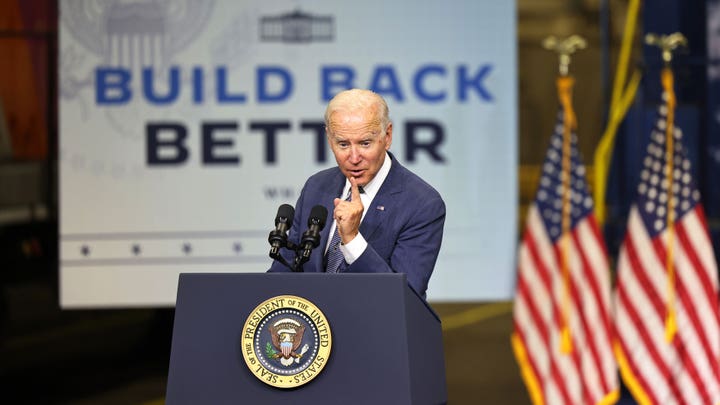
“Bracket creep occurs when more of a person’s income is in higher tax brackets because of inflation rather than higher real earnings,” Walczak said.
The so-called “hidden tax” is most likely to affect residents living in states where taxes are not indexed to inflation, meaning there’s no automatic cost-of-living adjustment built into the tax provision in order to keep pace with inflation. States with an income tax that is not indexed to inflation include Alabama, Connecticut, Delaware, Georgia, Hawaii, Kansas, Louisiana, Maryland, Mississippi, New Jersey, New Mexico, New York and Oklahoma.
For instance, a hypothetical Delaware resident who earned $60,000 in taxable income in 2019 and now makes $64,000 has not actually seen an increase in real income; the $64,000 she earns today has about the same purchasing power as the $60,000 she made in 2019, Walczak wrote.
On top of that, because her state’s income tax brackets are not indexed to inflation, that higher salary pushes her into a higher property tax rate (6.6%), whereas before she was paying a rate of 5.5%. Though the resident’s purchasing power is unchanged, her tax bill rises by $264.
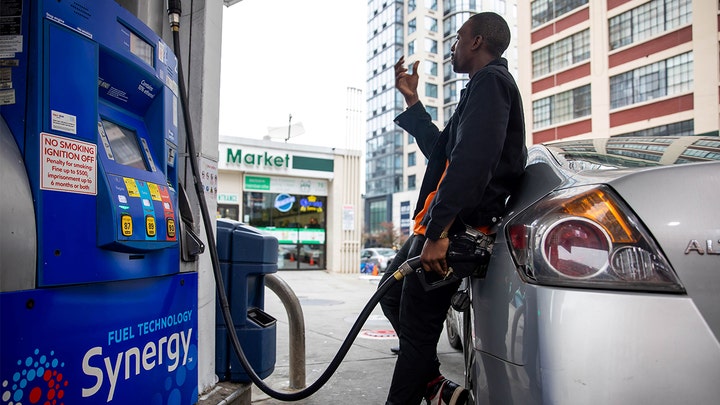
“The absence or insufficiency of cost-of-living adjustments in many state tax codes is always an issue, as it constitutes an unlegislated tax increase every year, cutting into wage growth and reducing return on investment,” Walczak wrote. “During a period of higher inflation, however, the impact is particularly significant.”
The analysis comes as the government released new data this week reporting that prices for U.S. consumers surged 6.2% in October compared with a year earlier. So-called core prices, which exclude the more volatile measurements of energy and food, rose 4.6% over the past year. Both are the largest increases in 30 years.
Rising inflation is eating away at strong gains and wages and salaries that American workers have seen in recent months (average hourly wages in the U.S. actually fell 1.2% last month compared with October 2020 when accounting for inflation).
Economists expect the spike to last well into 2022: A new Goldman Sachs analyst note published on Sunday warned that inflation metrics will remain “quite high for much of next year” until global supply chain bottlenecks clear up.
“It is now clear that this process will take longer than initially expected, and the inflation overshoot will likely get worse before it gets better,” the Goldman economists wrote.
通膨导致薪水推高级别 纽约等州缴税负担加重
世界新闻网
11/12/2021

受到通货膨胀影响,民众帐面上薪水看似增加,缴税时被推上税率较高的税收级距(tax bracket,又称税收级别),形同税务负担变重,这种「税级攀升」(bracket creep)状况可能将出现数以百万计的纳税人身上,尤其是住在纽约州、新泽西州、马里兰州及夏威夷州等十多州的居民。
通膨因素之下万物齐涨,民众帐面薪水虽然变多,但消费能力基本上没有改变。然而,薪酬变高却让纳税人因此被推上税率较高的税收级距,「税级攀升」的结果变是个人所得税负担变重。
国税局(IRS)将通膨因素纳入联邦所得税计算,但保守派智库「税务基金会」(Tax Foundation)日前公布研究报告指出,全美有15州规画州民个人所得税税收级距时,并没有把通货膨胀列入考量,至少有18州的个人免税额(personal exemption)计算,并未纳入通膨因素。
「税务基金会」指出,综合看来,全美有22州州法当中至少存在一项未随物价连动(unindexed)税制条款,导致纳税人在物价连续数月走高之际,还要面临更重的缴税负担。
撰写这份研究报告的「税务基金会」州税计划部副总监瓦查克(Jared Walczak)分析,税收级别、标准扣除额(standard deduction)或个人免税额如果没有纳入通膨因素,金钱等于在高物价之下贬值,消费者购买食物、汽油及缴房租,通通受到冲击。
州税如果没有把通膨列入计算的机制,居民犹如面临「隐藏税」(hidden tax)。阿拉巴马州、康乃狄克州、德拉瓦州、乔治亚州、夏威夷州、堪萨斯州、路易西安纳州、马里兰州、密西西比州、新泽西州、新墨西哥州、纽约州及奥克拉荷马州,州法当中的个人所得税计算,都没有纳入通膨连动因素。
瓦查克举例说,一名德拉瓦州居民如果2019年应税收入(taxable income)为6万元,现在应税收入增为6万4000元,受到通货膨胀影响,现在的购买能力其实跟2019年相差不大,由于德拉瓦州州税税收级距并未考虑通膨因素,2019年缴税时房地产税率(property tax rate)为5.5%,现在则因帐面收入增加,被推上税率6.6%的更高级别,要缴更多税。
瓦查克在报告中指出,通货膨胀长期存在的期间,税级攀升将对民众带来「特别重大的打击」。
您的税档变了吗?IRS因通胀上调联邦收入税门槛
来源:美国中文网
11/10/2021
周三国税局(IRS)宣布,2022年联邦收入税的边际税率不变,但是考虑到通货膨胀,每档税率对应的收入区间将有所上调,另外最高抵免额度也有所提高。
2022年,调整后的个人报税者边际税率为:
10%: 不超过$10,275的收入部分
12%: $10,275到$41,775之间的收入部分
22%: $41,775到$89,075之间的收入部分
24%: $89,075到$170,050之间的收入部分
32%: $170,050到$215,950之间的收入部分
35%: $215,950到$539,900之间的收入部分
37%: 超过$539,900的收入部分
(以上收入均指调整后的应缴税收入)
夫妻合报的边际税率如下:
10%: 不超过$20,550的收入部分
12%: $20,550到$83,550之间的收入部分
22%: $83,550到$178,150之间的收入部分
24%: $178,150到$340,100之间的收入部分
32%: $340,100到$431,900之间的收入部分
35%: $431,900到$647,850之间的收入部分
37%: 超过$647,850的收入部分
(以上收入均指调整后的应缴税收入)
调整后,夫妻合报的最高档税率对应年收入上调了将近2万元。实际上,所有税档对应的收入水平较2021年都上调了3%左右。这一上调幅度是近四年来的最大值。
另外,对于个人报税者来说,联邦收入税的最高抵免额调涨了400元至12950元;一家之主的最高抵免额上调了600元至19400元;夫妻合报的最高抵免额则上调了800元至25900元。
每年,IRS都会根据通胀调整税率对应的收入水平。周三劳工部数据显示消费者价格指数同比上涨了6.2%,是自1990年来的最大年度增幅。
IRS provides tax inflation adjustments for tax year 2022
R-2021-219, November 10, 2021
WASHINGTON — The Internal Revenue Service today announced the tax year 2022 annual inflation adjustments for more than 60 tax provisions, including the tax rate schedules and other tax changes. Revenue Procedure 2021-45 PDF provides details about these annual adjustments.
Highlights of changes in Revenue Procedure 2021-45:
The tax year 2022 adjustments described below generally apply to tax returns filed in 2023.
The tax items for tax year 2022 of greatest interest to most taxpayers include the following dollar amounts:
- The standard deduction for married couples filing jointly for tax year 2022 rises to $25,900 up $800 from the prior year. For single taxpayers and married individuals filing separately, the standard deduction rises to $12,950 for 2022, up $400, and for heads of households, the standard deduction will be $19,400 for tax year 2022, up $600.
- The personal exemption for tax year 2022 remains at 0, as it was for 2021, this elimination of the personal exemption was a provision in the Tax Cuts and Jobs Act.
- Marginal Rates: For tax year 2022, the top tax rate remains 37% for individual single taxpayers with incomes greater than $539,900 ($647,850 for married couples filing jointly).The other rates are:
35%, for incomes over $215,950 ($431,900 for married couples filing jointly);
32% for incomes over $170,050 ($340,100 for married couples filing jointly);
24% for incomes over $89,075 ($178,150 for married couples filing jointly);
22% for incomes over $41,775 ($83,550 for married couples filing jointly);
12% for incomes over $10,275 ($20,550 for married couples filing jointly).
The lowest rate is 10% for incomes of single individuals with incomes of $10,275 or less ($20,550 for married couples filing jointly).
- For 2022, as in 2021, 2020, 2019 and 2018, there is no limitation on itemized deductions, as that limitation was eliminated by the Tax Cuts and Jobs Act.
- The Alternative Minimum Tax exemption amount for tax year 2022 is $75,900 and begins to phase out at $539,900 ($118,100 for married couples filing jointly for whom the exemption begins to phase out at $1,079,800). The 2021 exemption amount was $73,600 and began to phase out at $523,600 ($114,600 for married couples filing jointly for whom the exemption began to phase out at $1,047,200).
- The tax year 2022 maximum Earned Income Tax Credit amount is $6,935 for qualifying taxpayers who have three or more qualifying children, up from $6,728 for tax year 2021. The revenue procedure contains a table providing maximum EITC amount for other categories, income thresholds and phase-outs.
- For tax year 2022, the monthly limitation for the qualified transportation fringe benefit and the monthly limitation for qualified parking increases to $280.
- For the taxable years beginning in 2022, the dollar limitation for employee salary reductions for contributions to health flexible spending arrangements increases to $2,850. For cafeteria plans that permit the carryover of unused amounts, the maximum carryover amount is $570, an increase of $20 from taxable years beginning in 2021.
- For tax year 2022, participants who have self-only coverage in a Medical Savings Account, the plan must have an annual deductible that is not less than $2,450, up $50 from tax year 2021; but not more than $3,700, an increase of $100 from tax year 2021. For self-only coverage, the maximum out-of-pocket expense amount is $4,950, up $150 from 2021. For tax year 2022, for family coverage, the annual deductible is not less than $4,950, up from $4,800 in 2021; however, the deductible cannot be more than $7,400, up $250 from the limit for tax year 2021. For family coverage, the out-of-pocket expense limit is $9,050 for tax year 2022, an increase of $300 from tax year 2021.
- The modified adjusted gross income amount used by joint filers to determine the reduction in the Lifetime Learning Credit provided in § 25A(d)(2) is not adjusted for inflation for taxable years beginning after December 31, 2020. The Lifetime Learning Credit is phased out for taxpayers with modified adjusted gross income in excess of $80,000 ($160,000 for joint returns).
- For tax year 2022, the foreign earned income exclusion is $112,000 up from $108,700 for tax year 2021.
- Estates of decedents who die during 2022 have a basic exclusion amount of $12,060,000, up from a total of $11,700,000 for estates of decedents who died in 2021.
- The annual exclusion for gifts increases to $16,000 for calendar year 2022, up from $15,000 for calendar year 2021.
- The maximum credit allowed for adoptions for tax year 2022 is the amount of qualified adoption expenses up to $14,890, up from $14,440 for 2021.
More Information
- News Release IR-2021-216, IRS announces 401(k) limit increases to $20,500.
IRS announces 401(k) limit increases to $20,500
R-2021-216, November 4, 2021
WASHINGTON — The Internal Revenue Service announced today that the amount individuals can contribute to their 401(k) plans in 2022 has increased to $20,500, up from $19,500 for 2021 and 2020. The IRS today also issued technical guidance regarding all of the cost‑of‑living adjustments affecting dollar limitations for pension plans and other retirement-related items for tax year 2022 in Notice 2021-61 PDF, posted today on IRS.gov.
Highlights of changes for 2022
The contribution limit for employees who participate in 401(k), 403(b), most 457 plans, and the federal government’s Thrift Savings Plan is increased to $20,500, up from $19,500.
The income ranges for determining eligibility to make deductible contributions to traditional Individual Retirement Arrangements (IRAs), to contribute to Roth IRAs, and to claim the Saver’s Credit all increased for 2022.
Taxpayers can deduct contributions to a traditional IRA if they meet certain conditions. If during the year either the taxpayer or the taxpayer’s spouse was covered by a retirement plan at work, the deduction may be reduced, or phased out, until it is eliminated, depending on filing status and income. (If neither the taxpayer nor the spouse is covered by a retirement plan at work, the phase-outs of the deduction do not apply.) Here are the phase-out ranges for 2022:
- For single taxpayers covered by a workplace retirement plan, the phase-out range is increased to $68,000 to $78,000, up from $66,000 to $76,000.
- For married couples filing jointly, if the spouse making the IRA contribution is covered by a workplace retirement plan, the phase-out range is increased to $109,000 to $129,000, up from $105,000 to $125,000.
- For an IRA contributor who is not covered by a workplace retirement plan and is married to someone who is covered, the phase-out range is increased to $204,000 to $214,000, up from $198,000 to $208,000.
- For a married individual filing a separate return who is covered by a workplace retirement plan, the phase-out range is not subject to an annual cost-of-living adjustment and remains $0 to $10,000.
The income phase-out range for taxpayers making contributions to a Roth IRA is increased to $129,000 to $144,000 for singles and heads of household, up from $125,000 to $140,000. For married couples filing jointly, the income phase-out range is increased to $204,000 to $214,000, up from $198,000 to $208,000. The phase-out range for a married individual filing a separate return who makes contributions to a Roth IRA is not subject to an annual cost-of-living adjustment and remains $0 to $10,000.
The income limit for the Saver’s Credit (also known as the Retirement Savings Contributions Credit) for low- and moderate-income workers is $68,000 for married couples filing jointly, up from $66,000; $51,000 for heads of household, up from $49,500; and $34,000 for singles and married individuals filing separately, up from $33,000.
The amount individuals can contribute to their SIMPLE retirement accounts is increased to $14,000, up from $13,500.
Key employee contribution limits that remain unchanged
The limit on annual contributions to an IRA remains unchanged at $6,000. The IRA catch-up contribution limit for individuals aged 50 and over is not subject to an annual cost-of-living adjustment and remains $1,000.
The catch-up contribution limit for employees aged 50 and over who participate in 401(k), 403(b), most 457 plans, and the federal government’s Thrift Savings Plan remains unchanged at $6,500. Therefore, participants in 401(k), 403(b), most 457 plans, and the federal government’s Thrift Savings Plan who are 50 and older can contribute up to $27,000, starting in 2022. The catch-up contribution limit for employees aged 50 and over who participate in SIMPLE plans remains unchanged at $3,000.
Details on these and other retirement-related cost-of-living adjustments for 2022 are in Notice 2021-61 PDF, available on IRS.gov.
最新!拜登银行监管新政,个人账户余额过$1万,IRS有权随时查账!
来源: 华人生活网
10/21/2021
0月20日,拜登政府放弃了一项有争议的提议,该提议要求国税局对每年交易金额超过600美元的所有银行账户收集更多数据。
该计划此前受到了共和党议员和银行业代表的广泛批评,称其税务执法策略代表了联邦政府对隐私的侵犯。
不过虽然该提议夭折,但是拜登政府并未完全放弃银行存款这一块的监管。
根据新规定,帐户余额超过1万美金,或者不包括薪资收入的存款、提款总额超过1万元,就会受到国税局加强检查;银行必须把帐户持有人的现金流导入导出汇整数据交给国税局,好让国税局锁定稽查目标。
民众注意的是通过工资收入获得的、自动扣除联邦税的收入的账户不计入其中。领取失业救济金和社会保障等联邦福利的人也可以豁免。
拜登表示:“很多富人为了逃税,每年从美国人民身上骗取数十亿美元。当适用于逃税行为的报告规则松散而模糊时,逃税行为就会猖獗起来。民主党人想要修复这个支离破碎的方法,打击高层的欺骗行为,”
财政部长珍妮特·耶伦(Janet Yellen)在会议上表示:“今天的新提案反映了政府的强烈信念,我们应该瞄准那些顶端的收入规模不付他们欠的税,同时保护美国工人通过设置银行账户阈值为10000美元,为工薪阶层提供豁免和教师和消防员一样。”
她表示,长期以来问题的核心是向IRS报告各种收入的方式存在差异:不透明的收入来源经常逃避审查,而工资和联邦福利通常几乎要完全遵守。这种双重税收制度是不公平的,剥夺了国家用于资助核心优先事项的资源。”
“新规定为了回应对范围的考虑,(国会)制定了一个新办法,包括对工薪阶层和工薪阶层以及联邦项目受益者的豁免。
这些变化将免除数百万美国人的申报要求,并帮助国税局将目标锁定在较富裕的美国人,特别是那些从投资、房地产和其他交易中赚钱的人,这些交易对国税局来说更难追踪。
最初的提议引起了共和党议员的愤怒,他们称这侵犯了隐私,是政府越权的一个例子。
即使修改了提案,参议院的共和党人仍然持批评态度。
爱达荷州共和党参议员迈克·克拉波(Mike Crapo)表示,拜登总统曾经承诺称,不会对年收入低于40万美元的美国人增税,他认为这一门槛应该适用于国税局的申报。
“他们为什么不直接颁布禁令,禁止美国国税局窥探年收入低于40万美元的人的账户呢?”我认为,这是这个方法的发起者应该问的问题。”
另外,银行业代表仍对任何额外的报告要求持怀疑态度,称这将造成负担,尤其是对小型社区银行。
据了解,该提案距离实施还有很长的路要走。该计划目前包括在数万亿美元的社会支出计划中,立法者和白宫已经协商了几个月。如果该方案获得通过并签署成为法律,这项要求要到2022年12月才会生效。
政府估计,税收执法的改善将在未来10年增加6000亿美元的税收收入。
美联邦国税局查帐门槛升至1万 仍遭质疑侵犯隐私
来源:世界新闻网
10/20/2021
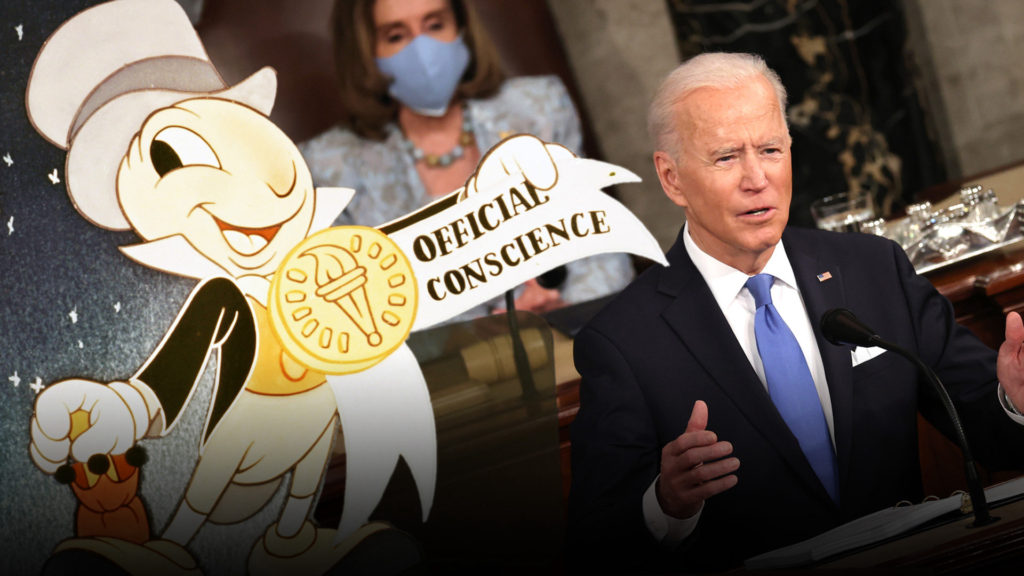
美国联邦国税局(IRS)拟查看所有存款馀额逾600元,或一年之内汇入汇出转帐额度超过600元的银行帐户,消息曝光后引发舆论强烈反弹;美国民主党籍国会议员19日达成协议,把查看帐户的适用对象改为存款馀额1万元以上帐户,但共和党方面则说,修正后的门槛仍侵犯民众隐私,“除非大家都不花钱。”
民主党籍麻州联邦参议员华伦(Elizabeth Warren)与参院财政委员会主席、民主党籍俄勒冈州联邦参议员魏登(Ron Wyden)19日下午公布修改后的新版政策。
根据新版规定,帐户馀额超过1万元,或者不包括薪资收入的存款、提款总额超过1万元,就会受到国税局加强检查;银行必须把帐户持有人的现金流汇入汇出彙整资料交给国税局,好让国税局锁定稽查目标。
彙整报告中的现金流不包括薪酬或工资所得,因为这部份原本就在国税局W-2报税表格权限范围;社安金支票也不会纳入现金流彙整报告统计。
国税局打算加强检视馀额600元以上帐户的计画,遭到共和党及金融机构极力反对,理由则是侵犯民众隐私;对于修正之后的新版规定,共和党国会议员也不接受。
共和党籍宾州联邦参议员图米(Pat Toomey)19日在记者会上说:“如果他们把门槛调高到1万元,适用对象仍然几乎包括所有人,还有所有商家。”
“民众平均帐户出入总额,约为6万1000元。”共和党籍爱达荷州联邦参议员克雷波(Mike Crapo)表示:“一般美国百姓都将成为这项计画的调查目标。”
帐户都被监视“除非大家不花钱”
克雷波说,排除薪水收入不计,其实影响不大,绝大多数民众的帐户还是将成为受到加强检视的对象,“除非大家都不花钱”。
面对共和党阵营批评,魏登回应指出:“共和党紧咬这个议题不放,用来做为扯谎藉口,原因是他们明白他们推出的税改政策其实非常失败。”
金融机构组织“美国独立银行家协会”(Independent Community Bankers of America,ICBA)发表声明指出,不管查看帐户的门槛是600元,1万元或10万元,适用对象都将包括数以百万计的消费者以及小型商家。
IRS:海外银行资产和金融账户申报10月15日截止
来源: 华人生活网
10/06/2021
很多华人即便入了美国国籍,但是在中国依旧有银行存款账户,也有人还有一些海外的生意。
大家要注意了,以下情况是要提交《国外银行和金融帐户报告》的。
在一个或多个帐户中有经济利益、有签字权或有其他权力,这些帐户包括在美国境外的银行帐户、经纪帐户、共同基金或其他金融帐户;日历年内任何时候所有外国金融帐户的总价值超过 1万 美元。

国税局(IRS)10月1日提醒美国公民、税法定义居民和任何境内法人实体,提交《国外银行和金融帐户报告》(FBAR) 的延期截止日为今年10 月15日。正常来说申报人若错过今年早些时候的 4 月 15 日年度截止日期,会被自动延期至 10 月 15 日提交FBAR,不需要申请延期。
国税局表示,申报人若受自然灾害影响,FBAR到期日可以要求进一步延长。重要的是,申报者须查看相关的FBAR 救援通知以获取完整信息。
目前由于1万美元这个界限的存在,国税局鼓励美国税务居民或拥有外国帐户的实体(即使是拥有相对较小的帐户),核查他们是否应就此报告申报。
美国税务居民指的是美国公民、居民或任何境内法人实体,例如合伙企业、公司、有限责任公司、遗产或信託。
国税局表示,申报人不应将FBAR与他们的联邦所得税申报表一起提交。
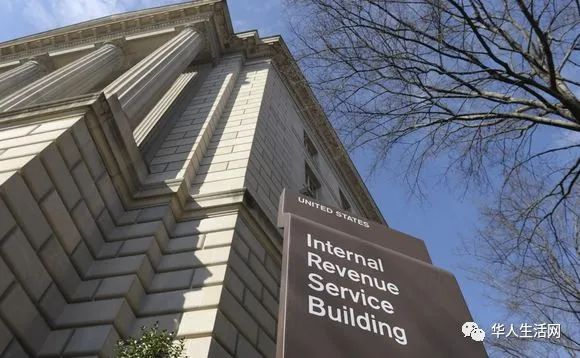
2020年FBAR必须以电子方式提交给金融罪行加强执法网络 (FinCEN),并且只能通过BSA电子申报系统网站递交。无法通过电子方式提交FBAR的纳税人必须致电金融罪行加强执法网络(FinCEN),美国境内拨打800-949-2732,美国境外拨打 703-905-3975。
凡未及时提交FBAR者,可能受到严重的民事和刑事处罚,可能导致罚款或监禁。
但若国税局确定延迟提交的原因合理,则不会惩罚那些延迟提交的FBAR 、报告外国帐户的人。
也有民众此前询问为什么经常看到5万美元的门槛,为什么此文中又说1万美元。这其实就是肥爸与肥咖的区别!
本月截止的是FBAR,也就是华人常说的肥爸。
“肥爸”﹙FBAR, Report of Foreign Bank and Financial Accounts ﹚是奥巴马政府于2009年5月发布税制改革“绿皮书”(The Green Book)中规定的,目的为严查美国境外所得税申报,以确定纳税人的境外所得完整申报,包含所有境外金融机构之账户,原先要求于2009年9月23日前需补申报海外账户。
后来,为了打击海外逃税,IRS又制定了“肥咖”(FATCA, Foreign Account Tax Compliance Act﹚。要求全世界各国银行交出美国税务居民金额美金5万以上的账户资料,企图在未来十年内追回估计超过85亿美元的海外逃税。两者在申报上也有许多区别:
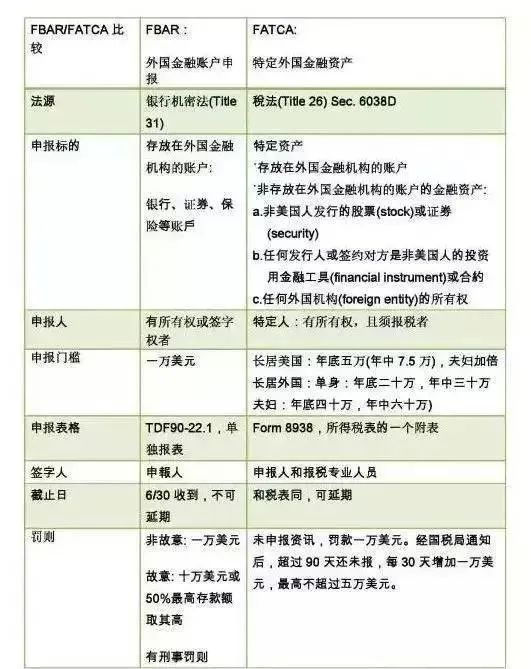
1 美元=6.47人民币
IRS: Oct. 15 FBAR extension deadline nears for foreign bank and financial account holders
IR-2021-196, October 1, 2021
WASHINGTON — The Internal Revenue Service reminds U.S. citizens, resident aliens and any domestic legal entity that the extension deadline to file their annual Report of Foreign Bank and Financial Accounts (FBAR) is Oct. 15, 2021.
Filers missing the April 15 annual due date earlier this year received an automatic extension until Oct. 15, 2021, to file the FBAR. They did not need to request the extension.
Filers affected by a natural disaster may have their FBAR due date further extended. It’s important filers review relevant FBAR Relief Notices for complete information.
Who needs to file?
The Bank Secrecy Act requires U.S. persons to file an FBAR if they have:
- Financial interest in, signature authority or other authority over one or more accounts, such as a bank account, brokerage account, mutual fund or other financial account located outside the United States, and
- The aggregate value of all foreign financial accounts exceeds $10,000 at any time during the calendar year.
Because of this threshold, the IRS encourages U.S. persons or entities with foreign accounts, even relatively small ones, to check if this filing requirement applies to them. A U.S. person is a citizen or resident of the United States or any domestic legal entity such as a partnership, corporation, limited liability company, estate or trust.
How to file
Filers do not file the FBAR with their federal income tax return. The 2020 FBAR must be filed electronically with the Financial Crimes Enforcement Network (FinCEN) and is only available through the BSA E-Filing System website. Those who are unable to e-file their FBAR must call FinCEN at 800-949-2732, or from outside the U.S. at 703-905-3975.
Avoid penalties
Those who don’t file an FBAR when required may be subject to significant civil and criminal penalties that can result in a fine and/or prison. The IRS will not penalize those who properly reported a foreign account on a late-filed FBAR if the IRS determines there was reasonable cause for late filing.
FBAR resources on IRS.gov:
- How to report foreign bank and financial accounts
- International Taxpayers
- IRS FBAR Reference Guide PDF
- FAQs About International Individual Tax Matters
- FinCEN’s website Reporting Maximum Account Value
To help avoid delays with tax refunds, taxpayers living abroad should visit Helpful Tips for Effectively Receiving a Tax Refund for Taxpayers Living Abroad on IRS.gov.
IRS: Report of Foreign Bank and Financial Accounts (FBAR)
Every year, under the law known as the Bank Secrecy Act, you must report certain foreign financial accounts, such as bank accounts, brokerage accounts and mutual funds, to the Treasury Department and keep certain records of those accounts. You report the accounts by filing a Report of Foreign Bank and Financial Accounts (FBAR) on FinCEN Form 114.
Who Must File
A United States person, including a citizen, resident, corporation, partnership, limited liability company, trust and estate, must file an FBAR to report:
- a financial interest in or signature or other authority over at least one financial account located outside the United States if
- the aggregate value of those foreign financial accounts exceeded $10,000 at any time during the calendar year reported.
Generally, an account at a financial institution located outside the United States is a foreign financial account. Whether the account produced taxable income has no effect on whether the account is a “foreign financial account” for FBAR purposes.
But, you don’t need to report foreign financial accounts that are:
- Correspondent/Nostro accounts,
- Owned by a governmental entity,
- Owned by an international financial institution,
- Maintained on a United States military banking facility,
- Held in an individual retirement account (IRA) you own or are beneficiary of,
- Held in a retirement plan of which you’re a participant or beneficiary, or
- Part of a trust of which you’re a beneficiary, if a U.S. person (trust, trustee of the trust or agent of the trust) files an FBAR reporting these accounts.
You don’t need to file an FBAR for the calendar year if:
- All your foreign financial accounts are reported on a consolidated FBAR.
- All your foreign financial accounts are jointly-owned with your spouse and:
- You completed and signed FinCEN Form 114a authorizing your spouse to file on your behalf, and your spouse reports the jointly-owned accounts on a timely-filed, signed FBAR.
Note: Income tax filing status, such as married-filing-jointly and married-filing-separately has no effect on your qualification for this exception.
The FBAR Reference Guide PDF) and FBAR instructions PDF provide more detailed information. The FBAR webinar explains how to calculate the aggregate value of your accounts to figure if you need to file an FBAR.
When to File
The FBAR is an annual report, due April 15 following the calendar year reported.
You’re allowed an automatic extension to October 15 if you fail to meet the FBAR annual due date of April 15. You don’t need to request an extension to file the FBAR.
If you are affected by a natural disaster, the government may further extend your FBAR due date. It’s important that you review relevant FBAR Relief Notices for complete information.
For certain employees or officers with signature or other authority over, but no financial interest in certain foreign financial accounts, the 2018 FBAR due date is deferred to April 15, 2020. See Notice 2018-1 PDF.
How to File
You must file the FBAR electronically through the Financial Crimes Enforcement Network’s BSA E-Filing System. You don’t file the FBAR with your federal tax return.
If you want to paper-file your FBAR, you must call FinCEN’s Regulatory Helpline to request an exemption from e-filing. See Contact Us below to reach this Helpline. If FinCEN approves your request, FinCEN will send you the paper FBAR form to complete and mail to the IRS at the address in the form’s instructions. IRS will not accept paper-filings on TD F 90-22.1 (obsolete) or a printed FinCEN Form 114 (for e-filing only).
If you want someone to file your FBAR on your behalf, use FinCEN Report 114a PDF, Record of Authorization to Electronically File FBARs, to authorize that person to do so. You don’t submit FinCEN Report 114a when filing the FBAR; just keep it for your records and make it available to FinCEN or IRS upon request.
Keeping Records
You must keep records for each account you must report on an FBAR that establish:
- Name on the account,
- Account number,
- Name and address of the foreign bank,
- Type of account, and
- Maximum value during the year.
The law doesn’t specify the type of document to keep with this information; it can be bank statements or a copy of a filed FBAR, for example, if they have all the information.
You must keep these records for five years from the due date of the FBAR.
Exception: An officer or employee who files an FBAR to report signature authority over an employer’s foreign financial account doesn’t need to personally keep records on these accounts. The employer must keep the records for these accounts.
Penalties
You may be subject to civil monetary penalties and/or criminal penalties for FBAR reporting and/or recordkeeping violations. Assertion of penalties depends on facts and circumstances. Civil penalty maximums must be adjusted annually for inflation. Current maximums are as follows:
| U.S. Code citation | Civil Monetary Penalty Description | Current Maximum |
|---|---|---|
| 31 U.S.C. 5321(a)(5)(B)(i) | Foreign Financial Agency Transaction – Non-Willful Violation of Transaction | $12,921 |
| 31 U.S.C. 5321(a)(5)(C) | Foreign Financial Agency Transaction – Willful Violation of Transaction | Greater of $129,210, or 50% of the amount per 31 U.S.C.5321(a)(5)(D) |
| 31 U.S.C. 5321(a)(6)(A) | Negligent Violation by Financial Institution or Non-Financial Trade or Business | $1,118 |
| 31 U.S.C. 5321(a)(6)(B) | Pattern of Negligent Activity by Financial Institution or Non-Financial Trade or Business | $86,976 |
Criminal penalty maximums are provided in the FBAR Resources below.
Filing Delinquent FBARs
Filing an FBAR late or not at all is a violation and may subject you to penalties (see Penalties above). If you have not been contacted by IRS about a late FBAR and are not under civil or criminal investigation by IRS, you may file late FBARs and, to keep potential penalties to a minimum, should do so as soon as possible. To keep potential penalties to a minimum, you should file late FBARs as soon as possible.
Follow these instructions to explain your reason for filing late. If you’re participating in an optional program to resolve FBAR noncompliance, such as Delinquent FBAR Submission Procedures or Streamlined Filing Compliance Procedures , follow the instructions for those programs.

Representation for FBAR Issues
You can file Form 2848, Power of Attorney and Declaration of Representative, if the IRS begins an FBAR examination as a result of an income tax examination (Title 26). Complete Line 3, acts authorized, as follows:
- Under Description of Matter – Matters relating to Report of Foreign Bank and Financial Accounts or “FBAR Examination”
- Under Tax Form Number – FinCEN Form 114
- Under Year(s) or Period(s) – applicable tax year(s)
(Note: Disregard previous guidance to complete Line 5a, additional acts authorized.)
Don’t use Form 2848 if a related income tax examination doesn’t apply. You may use a general power of attorney form executed under applicable state law.

FBAR Resources
- FBAR Reference Guide PDF
- Webinar: Reporting of Foreign Bank and Financial Accounts on the Electronic FBAR
- FBAR fact sheet
Note: Civil penalty maximums in these materials are no longer current, as these amounts are adjusted annually for inflation. See Penalties above for more information.
Contact Us
Can’t find the answer to your question in online information? Contact us.
| Contact | Business Hours | Help Offered | |
|---|---|---|---|
| IRS FBAR Hotline | 866-270-0733; or if calling from outside the United States, 313-234-6146 | Monday – Friday, 8 a.m. to 4:30 p.m. EST | General questions: FBAR filing requirements Filing methods |
| FinCEN’s BSA E-Filing Help Desk | See FinCEN’s website for contact information | Monday – Friday, 8 a.m. to 6 p.m. EST | Technical questions about BSA’s E-Filing System |
| FinCEN’s Regulatory Helpline | See FinCEN’s website for contact information | Leave a message for a return call | E-filing exemptions to allow FBAR paper-filingQuestions about BSA regulations |

IRS: Expanded tax benefits help individuals and businesses give to charity during 2021; deductions up to $600 available for cash donations by non-itemizers
IR-2021-190, September 17, 2021
WASHINGTON — The Internal Revenue Service today explained how expanded tax benefits can help both individuals and businesses give to charity before the end of this year.
The Taxpayer Certainty and Disaster Tax Relief Act of 2020, enacted last December, provides several provisions to help individuals and businesses who give to charity. The new law generally extends through the end of 2021 four temporary tax changes originally enacted by the Coronavirus Aid, Relief, and Economic Security (CARES) Act. Here is a rundown of these changes.
Deduction for individuals who don’t itemize; cash donations up to $600 qualify
Ordinarily, individuals who elect to take the standard deduction cannot claim a deduction for their charitable contributions. The law now permits these individuals to claim a limited deduction on their 2021 federal income tax returns for cash contributions made to certain qualifying charitable organizations. Nearly nine in 10 taxpayers now take the standard deduction and could potentially qualify to claim a limited deduction for cash contributions.
These individuals, including married individuals filing separate returns, can claim a deduction of up to $300 for cash contributions made to qualifying charities during 2021. The maximum deduction is increased to $600 for married individuals filing joint returns.
Cash contributions to most charitable organizations qualify. However, cash contributions made either to supporting organizations or to establish or maintain a donor advised fund do not qualify. Cash contributions carried forward from prior years do not qualify, nor do cash contributions to most private foundations and most cash contributions to charitable remainder trusts. In general, a donor-advised fund is a fund or account maintained by a charity in which a donor can, because of being a donor, advise the fund on how to distribute or invest amounts contributed by the donor and held in the fund. A supporting organization is a charity that carries out its exempt purposes by supporting other exempt organizations, usually other public charities. See Publication 526, Charitable Contributions for more information on the types of organizations that qualify.
Cash contributions include those made by check, credit card or debit card as well as amounts incurred by an individual for unreimbursed out-of-pocket expenses in connection with the individual’s volunteer services to a qualifying charitable organization. Cash contributions don’t include the value of volunteer services, securities, household items or other property.
100% limit on eligible cash contributions made by itemizers in 2021
Subject to certain limits, individuals who itemize may generally claim a deduction for charitable contributions made to qualifying charitable organizations. These limits typically range from 20% to 60% of adjusted gross income (AGI) and vary by the type of contribution and type of charitable organization. For example, a cash contribution made by an individual to a qualifying public charity is generally limited to 60% of the individual’s AGI. Excess contributions may be carried forward for up to five tax years.
The law now permits electing individuals to apply an increased limit (“Increased Individual Limit”), up to 100% of their AGI, for qualified contributions made during calendar-year 2021. Qualified contributions are contributions made in cash to qualifying charitable organizations.
As with the new limited deduction for nonitemizers, cash contributions to most charitable organizations qualify, but, cash contributions made either to supporting organizations or to establish or maintain a donor advised fund, do not. Nor do cash contributions to private foundations and most cash contributions to charitable remainder trusts.
Unless an individual makes the election for any given qualified cash contribution, the usual percentage limit applies. Keep in mind that an individual’s other allowed charitable contribution deductions reduce the maximum amount allowed under this election. Eligible individuals must make their elections with their 2021 Form 1040 or Form 1040-SR.
Corporate limit increased to 25% of taxable income
The law now permits C corporations to apply an increased limit (Increased Corporate Limit) of 25% of taxable income for charitable contributions of cash they make to eligible charities during calendar-year 2021. Normally, the maximum allowable deduction is limited to 10% of a corporation’s taxable income.
Again, the Increased Corporate Limit does not automatically apply. C corporations must elect the Increased Corporate Limit on a contribution-by-contribution basis.
Increased limits on amounts deductible by businesses for certain donated food inventory
Businesses donating food inventory that are eligible for the existing enhanced deduction (for contributions for the care of the ill, needy and infants) may qualify for increased deduction limits. For contributions made in 2021, the limit for these contribution deductions is increased from 15% to 25%. For C corporations, the 25% limit is based on their taxable income. For other businesses, including sole proprietorships, partnerships, and S corporations, the limit is based on their aggregate net income for the year from all trades or businesses from which the contributions are made. A special method for computing the enhanced deduction continues to apply, as do food quality standards and other requirements.
Keep good records
The IRS reminds individuals and businesses that special recordkeeping rules apply to any taxpayer claiming a charitable contribution deduction. Usually, this includes obtaining an acknowledgment letter from the charity before filing a return and retaining a cancelled check or credit card receipt for contributions of cash. For donations of property, additional recordkeeping rules apply, and may include filing a Form 8283 and obtaining a qualified appraisal in some instances.
For details on how to apply the percentage limits and a description of the recordkeeping rules for substantiating gifts to charity, see Publication 526, available on IRS.gov.
The IRS also encourages employers to help get the word out about the advance payments of the Child Tax Credit because they have direct access to many employees and individuals who receive this credit.
For more information about other Coronavirus-related tax relief, visit IRS.gov/coronavirus.




